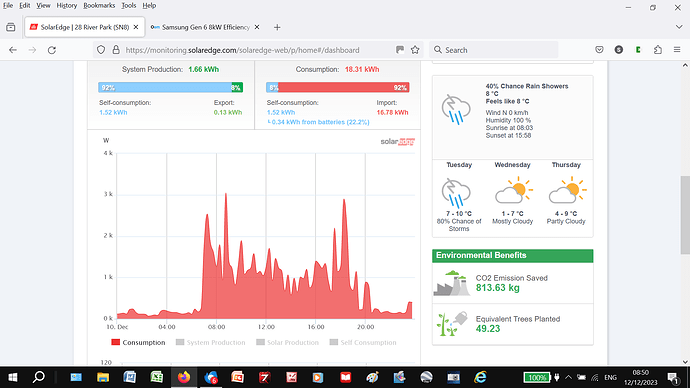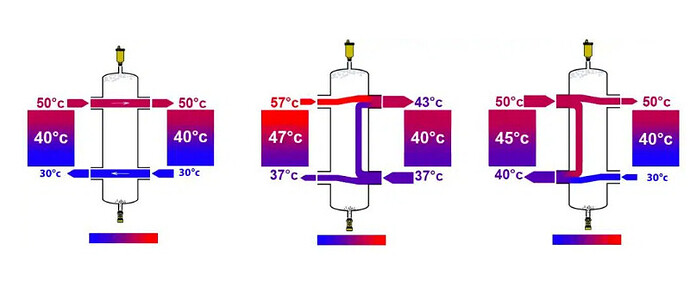maybe I missed some of your radiators in my maths! but the point is the same, the radiators output at -6C outside, 40C heat pump water temperature, is 2500W. The heatpump is rated for 8000W. its lowest running power is about 2000w (25% of spec). this is only a guide, the mfrs don’t publish, but there are plenty of people with samsung and 25% is roughly the best you get.
so at -6C temps, the house needs 2500w , the radiators output 2500w (because the WT is 40C) , the heat pump is able to output 2500 at a stable constant rate, everything is balanced . it’ll be as efficient as it can be , all other things considered.
now we move to a warmer temperature , around 0C outside. your house will need maybe 1800W to stay warm. you reduce the flow temperature using weather compensation (perhaps to 37C? not done the maths) so the radiators put out 1800W.
The heatpump is still putting 2000W into the circuit. It can’t put any less. This means the water in the circuit rises (based on the 200W surplus) until the heat pump says “water in circuit is too hot, I’m switching off”. then the system cools down for a bit, the heat pump decides “ok its cool enough now, I’ll switch back on”. That is a “cycle”. If this happens repeatedly its commonly referred to as “cycling”. If it happens repeatedly with short time intervals between them its referred to as “short cycling”.
move to an even warmer temperature - say around 4C outside. flow temp might be reduced to 35 or less (I’ve not done the exact maths) . the surplus between what the house needs and the radiators output (maybe now only 1000W) and what the heat pump can give at its minimum (still 2000W) as more. so the cycling will get worse - the 1000W surplus pushes the circuit water over the target temperature very frequently.
frequent and unstable cycling is really bad for COP. I would put money on your system suffering from cycling. emoncms would prove it categorically. based on what you’ve said that they’re trying beta firmware that modifies the control temps, I suspect that samsung and your installer know it does.
your HP is oversized. your system needs 2500W at -6C. If that is your design target then that needs to be 100% of the capacity of the heat pump that you buy, not 30% of it. As you move up in temperature, your system is needing to run at 15% or even 10% of capacity, which it just can’t do stably.
Of course you can’t buy a 2500W heat pump from samsung. So next best thing is to get them to downsize it to the 5000W.
I appreciate that english isn’t your first language - its an awful lot better than my danish! I’m trying to keep the words clear!

